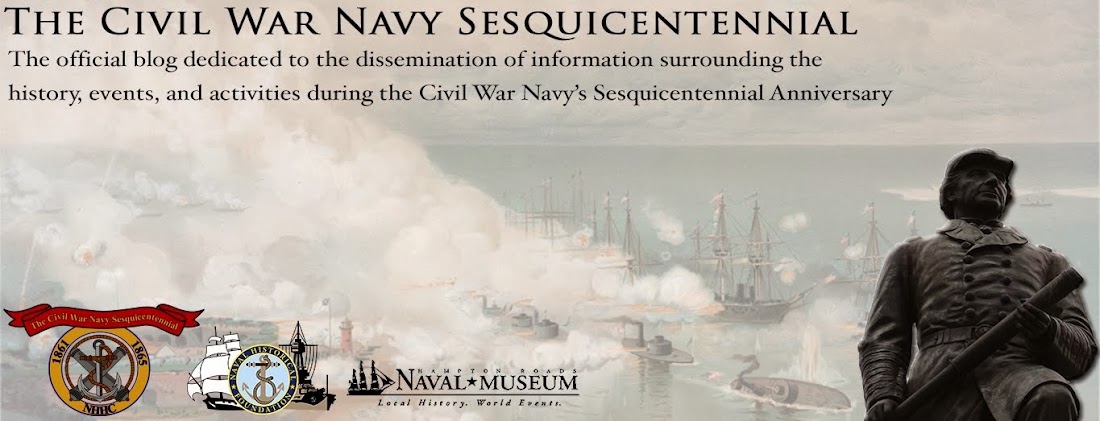 Sketch of Key West in Civil War period
Sketch of Key West in Civil War periodIn a prior post ("The Blockade Begins"), I covered the formation of the Union Navy blockading squadrons. The blockade of the Gulf coast of the southern states was initially the responsibility of the Gulf Coast Blockading Squadron, under the command of Flag Officer William Mervine. In February 1862, the Gulf Squadron was divided into the West Gulf Blockading Squadron, under the command of Flag Officer David G. Farragut, and the East Gulf Blockading Squadron under the command of Flag Officer William McKean, who succeeded Mervine, possibly in part because Navy Sec. Gideon Welles thought the former Gulf Squadron commander not aggressive enough. The East Gulf Squadron initially had the sector of coast from Cape Florida (just north of the Florida Keys) around to St. Andrews Bay, east of Pensacola, FL. Protestations from the South Atlantic Blockading Squadron that their sector was too extensive resulted in the extension of the East Gulf Squadron’s sector of operations north up the Florida East Coast to Mosquito Inlet (present day Ponce De Leon Inlet), north of Cape Canaveral.
The East Gulf Blockading Squadron was based out of Key West, Florida, which always remained in Union hands; it never had to be re-taken by Union forces. Back in those days, the only way to get to Key West was by sea. The overseas railroad across the Florida Keys, built by Mr. Flagler, and the later overseas highway that was the old “US 1” were decades away. Key West had a US Navy base and was guarded by Ft. Taylor on the mainland and Ft. Jefferson, offshore on the Dry Tortugas. The East Gulf Squadron had low priority for the US Navy throughout the War, mainly because there were no major ports such as Wilmington, Charleston, Mobile or New Orleans, and thus little potential for major action. It was “the backwater” for USN personnel assigned to ships in the squadron. Yellow fever and malaria were constant plagues on the men who served there. Cdr. Percival Drayton, on his way from the South Atlantic Squadron over to the West Gulf Squadron to serve as Farragut’s Flag Captain, commented on his time in Key West (to a friend in the northern US):
“This is rather a dreary residence I should suppose, a sand bank varied with cocoa nut and a few other trees of the tropics, but the soil so light and sandy, as to be almost unfit for gardening purposes, and for all such products as the ordinary table vegetables your city affords their only supply, . . .”
Despite the unspectacular nature of the duty, I have to think that the efforts of the sailors of the East Gulf Blockading Squadron contributed to the success of the blockade, as much as those of any other of the squadrons. Dr. George Buker chronicled the efforts of the East Gulf Squadron in his book “Blockaders, Refugees, & Contrabands. Civil War on Florida’s Gulf Coast, 1861-1865” and Robert Macomber created a compelling story of the activities of the fictional naval officer Peter Wake of the East Gulf Squadron in three novels: “At the Edge of Honor”, “Point of Honor” and “Honorable Mention.” I highly recommend all to you.
Many thanks to Sarah, fellow CWN 150 Guest Blogger, for making available a link to Percival Drayton’s letters (I have found them fascinating) and the Florida Dept. of State on-line photo archive for the old photos and illustrations of Key West.
Fort Taylor, Key West, FL:

Navy anchorage at Key West, FL:

Navy barracks at Key West after the War:


No comments:
Post a Comment